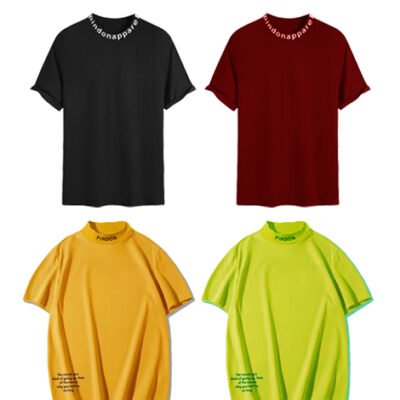Fashion is a dynamic, ever-changing tapestry that has captivated human society for centuries. More than just clothing, fashion is a powerful form of self-expression, a mirror reflecting cultural shifts, and an industry that influences economies worldwide. From the runways of Paris to the streets of Tokyo, fashion serves as both an art form and a global language that transcends borders and unites people through creativity and innovation.
The Evolution of Fashion: A Brief History
Fashion has always been a reflection of the times. In ancient civilizations, clothing was more about practicality and status than personal expression. The garments worn by ancient Egyptians, for instance, were heavily influenced by the hot climate and social hierarchy, with linen being the fabric of choice for its breathability. Meanwhile, in ancient Rome, togas and stolas were symbols of citizenship and social status, differentiating the elites from the common people.
The Renaissance period brought about a significant transformation in fashion, especially in Europe. With the rise of the merchant class and the spread of new ideas, clothing became a means of displaying wealth and power. Sumptuous fabrics like silk, velvet, and brocade were favored by the aristocracy, while intricate embroidery and lacework became hallmarks of elegance.
The Industrial Revolution in the 18th and 19th centuries democratized fashion, making it more accessible to the masses. The invention of the sewing machine and advances in textile manufacturing allowed for the mass production of clothing, reducing costs and increasing availability. This period also marked the beginning of fashion as an industry, with the emergence of department stores and fashion magazines.
Fashion as a Reflection of Culture
Fashion is deeply intertwined with culture, often serving as a visual representation of societal values, traditions, and shifts. The 20th century, in particular, saw rapid changes in fashion, driven by cultural movements and technological advancements.
The Roaring Twenties, for example, brought about a significant departure from the restrictive clothing of the Victorian era. Flapper dresses, with their shorter hemlines and loose silhouettes, became symbols of the newfound freedom and independence of women. This era also saw the rise of designers like Coco Chanel, who revolutionized women’s fashion with her emphasis on comfort and simplicity.
The 1960s and 1970s were marked by countercultural movements that heavily influenced fashion. The rise of the hippie movement, with its rejection of mainstream values, gave birth to bohemian fashion—characterized by flowing fabrics, ethnic prints, and a DIY ethos. Similarly, the punk movement of the late 1970s, with its anti-establishment attitude, brought about a raw, rebellious style that included ripped clothing, leather jackets, and bold hairstyles.
In the 21st century, fashion continues to be a reflection of global culture, with influences coming from all corners of the world. The rise of streetwear, for instance, is a testament to the influence of urban culture and the blending of high fashion with everyday wear. Designers now draw inspiration from diverse sources, including music, art, and social media, creating a melting pot of styles that cater to a global audience.
The Role of Fashion in Identity and Self-Expression
Fashion is more than just clothing; it is a powerful tool for self-expression and identity. The way we dress can communicate our personality, values, and even our mood on a particular day. It allows us to align ourselves with certain groups, whether subcultures, professions, or social movements, and can also serve as a means of rebellion or conformity.
For many, fashion is a way to assert their individuality. Personal style is a form of self-expression that goes beyond trends, allowing people to showcase their unique tastes and preferences. Whether it’s through bold patterns, unconventional silhouettes, or a minimalist approach, fashion gives individuals the freedom to craft their own identity.
Fashion also plays a significant role in social and cultural movements. Throughout history, clothing has been used as a form of protest and a way to challenge societal norms. The suffragettes of the early 20th century, for example, used fashion to make a statement, wearing white dresses as symbols of purity and their fight for women’s rights. In more recent times, the LGBTQ+ community has used fashion as a way to express pride and visibility, with rainbow-colored garments becoming synonymous with the movement.
The Future of Fashion: Sustainability and Innovation
As we move further into the 21st century, the fashion industry is at a crossroads. The demand for fast fashion—affordable, trendy clothing that is quickly produced—has led to significant environmental and ethical concerns. The fashion industry is one of the largest contributors to pollution, with textile waste, water consumption, and carbon emissions being major issues. Additionally, the exploitation of workers in developing countries has brought attention to the need for more ethical practices in the industry.
In response to these challenges, there has been a growing movement towards sustainability and innovation in fashion. Designers and brands are increasingly embracing eco-friendly materials, such as organic cotton, recycled polyester, and biodegradable fabrics. The concept of circular fashion, where clothing is designed for longevity and recyclability, is gaining traction as a way to reduce waste.
Technology is also playing a crucial role in shaping the future of fashion. Advances in 3D printing, for instance, are opening up new possibilities for custom, on-demand clothing, reducing the need for mass production. Virtual fashion shows and digital clothing are becoming more common, allowing designers to showcase their work without the environmental impact of traditional fashion events.
Moreover, the rise of social media and e-commerce has transformed the way we consume fashion. Influencers and online platforms have democratized fashion, giving consumers more power and choice than ever before. This shift has also led to a greater emphasis on inclusivity, with brands now offering a wider range of sizes, styles, and price points to cater to a diverse audience.
Conclusion
Fashion is a constantly evolving art form that reflects our culture, identity, and values. As we continue to navigate the challenges and opportunities of the modern world, the fashion industry must balance creativity with sustainability, innovation with ethics. Ultimately, fashion will always be a reflection of who we are, where we come from, and where we are going. It is an ever-changing canvas that captures the spirit of the times and allows us to express our true selves.









